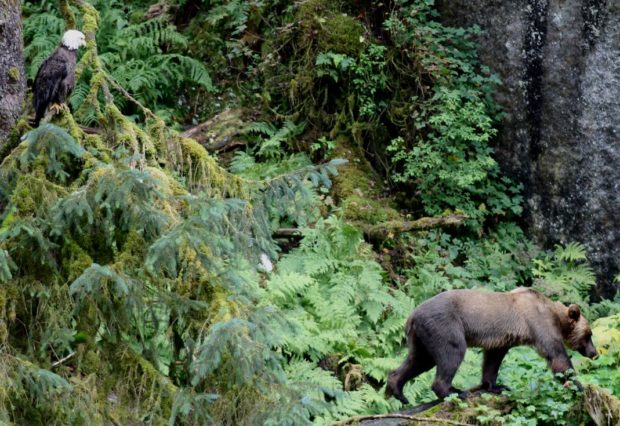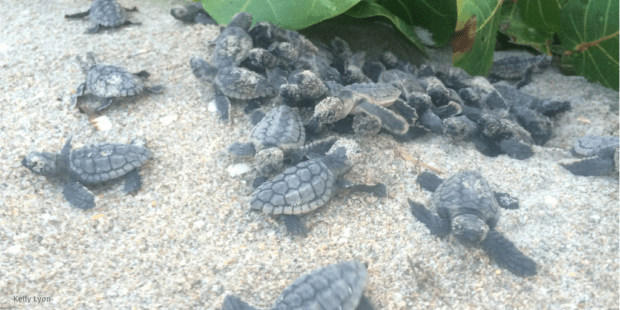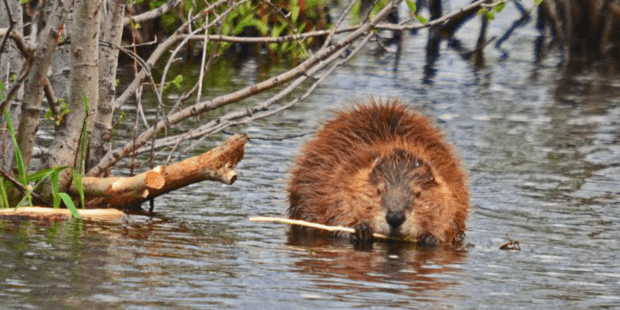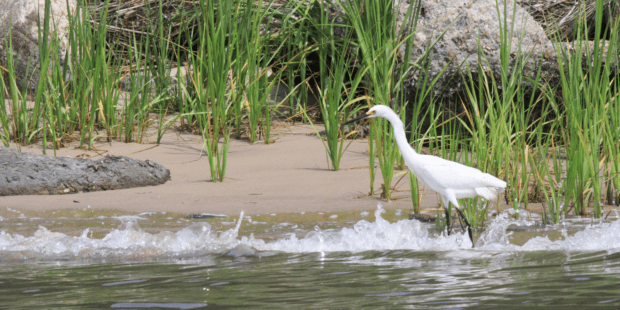We have much more to do and your continued support is needed now more than ever.
5 Wild and Natural Climate Solutions You May See on Your Summer Vacation
Natural infrastructure and natural solutions to climate change are everywhere. Natural features and ecosystems like forests, wetlands, and prairies absorb carbon pollution and boost protections against extreme weather. As you make travel plans for summer vacation, keep an eye out for some of these important natural resources that naturally help reduce the impacts of climate change and also provide habitat for wildlife!
Forests

- In Alaska, the Tongass National Forest is the largest national forest in the United States. The forest supports eagles, bears, and spawning salmon, but it also functions as an important natural climate solution—a massive carbon sink. Forests on the Tongass store more than 650 million tons of carbon—the most of any national forest. This massive stock of carbon makes the Tongass one of America’s most important tools in fighting greenhouse gas pollution and climate change.
- The North Woods in Maine contain 3.5 million acres of forest that absorb several million metric tons of climate-change-driving carbon each year. The North Woods also support Maine’s Moose populations, the largest in the lower 48 states. It is critical that this forest be managed in a sustainable manner that preserves its role in providing natural climate benefits, clean and abundant water, and important wildlife habitat.
Beaches and Barrier Islands

- Hurricane Harvey decimated large areas along the Texas coast. However, one area along the coast was better able to withstand the impact of the hurricane due to a coastal restoration project project that is part of a larger effort to restore and protect the Salt Bayou Watershed. The project was located at McFaddin National Wildlife Refuge in Texas, and involved the restoration of a three-mile stretch of sand dunes. These important beaches and dunes help buffer the coastline from storm surge and maintain healthy levels of salinity in local salt marshes. They also provide important habitat for nesting sea turtles and other wildlife.
- In South Carolina, barrier islands help protect the state from the impacts of hurricanes and severe storms, and provide important habitat for wildlife like migrating birds and sea turtles. By managing tidal flows, managers have been able to lessen the risk of flooding and restore wildlife-rich wetland habitat. Scientists are also experimenting with artificial “oyster castles” made of concrete and limestone which can help reestablish damaged oyster reefs. These important reefs help buffer the coasts from sea-level rise and storm surge, and create important wildlife habitat.
Waterways

- Beaver dams and the riparian habitat they create in places like Colorado’s Rocky Mountain National Park can help ease drought conditions and give wildfires a natural break. Surprisingly, studies are showing that “beaver meadows”—sediment-rich wetlands resulting from beaver dams—are also sequestering climate-driving greenhouse gasses from the atmosphere.
- In West Virginia, the Muddy Creek Watershed Restoration Project represents one of the state’s many success stories in restoring healthy waterways. This restoration project helped restore ecological connectivity and clean water to the area, which in turn will help support more resilient waterways and forests that can help boost protections against increased flooding. This restored habitat will also be able to support freshwater fish like the brook trout, a species that is struggling due to threats including rising water temperatures.
Prairies

- If you happen to pass through the prairies of Iowa and agricultural areas in the Midwest, you may see innovative natural solutions implemented by farmers to help confront the impacts of climate change. These practices include cover crops, which help improve soil and store carbon, and restored natural water features like wetlands and ponds, which help control flooding. Both of these practices also improve wildlife habitat—a win-win natural climate solution.
Marshes

- In Virginia and Maryland, natural resource managers are working to restore the saltmarsh on Assateague Island. This popular island destination is also located along the Atlantic Flyway, and over 200 species of birds have been sighted on it, including piping plover. The work to restore the marshes will improve wildlife habitat and help protect the island from the impacts of sea-level rise.
We’d love to hear about your favorite natural vacation spot! Chances are this wild and natural system is helping protect people and wildlife from a changing climate. Share a photo or your experience by adding a tweet here with the hashtag #wildclimatesolutions:





















